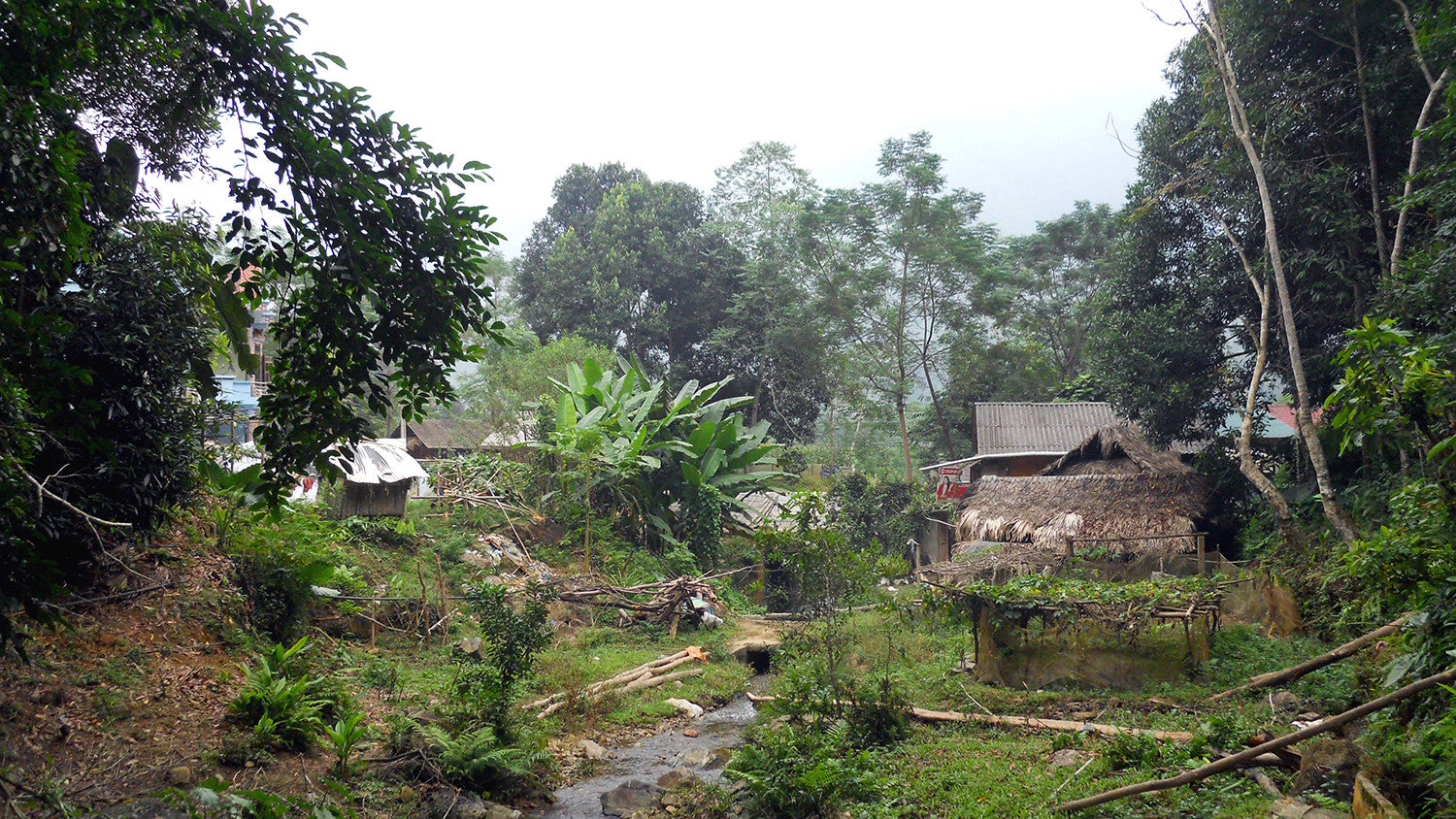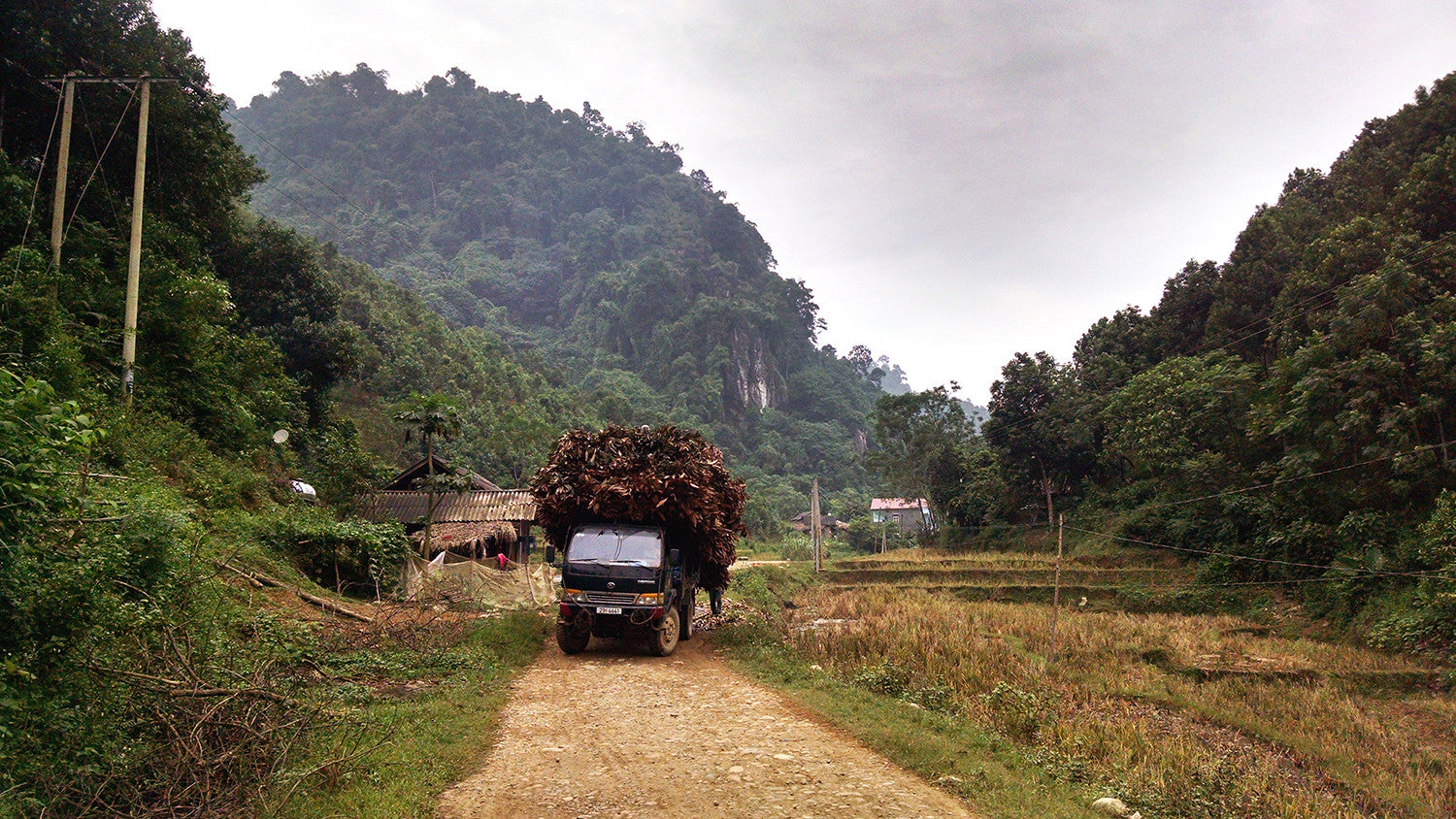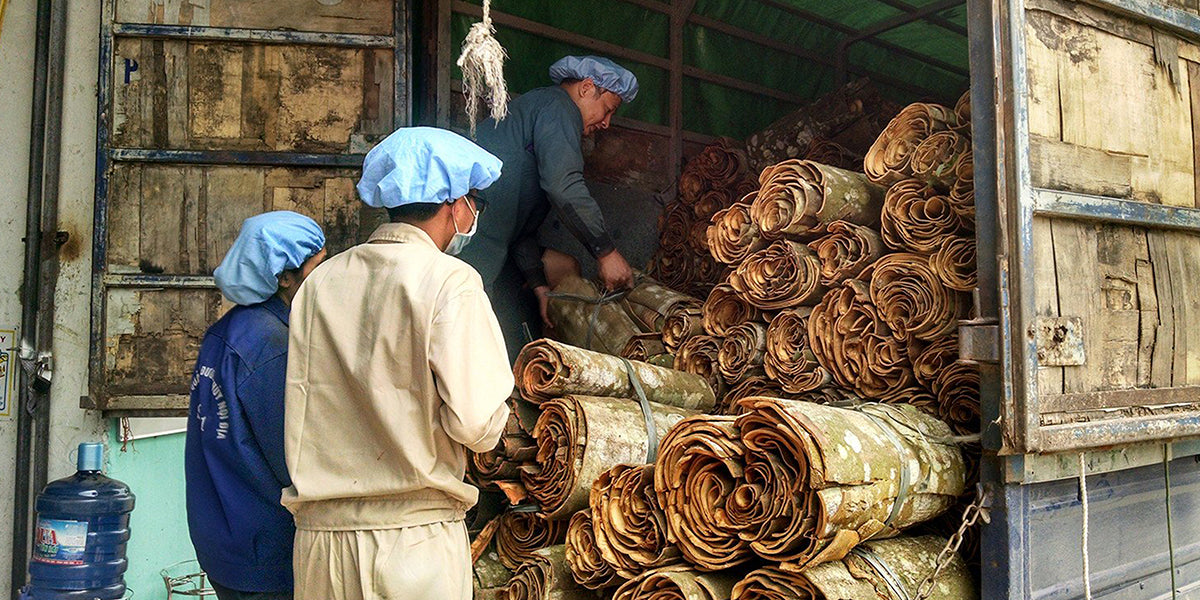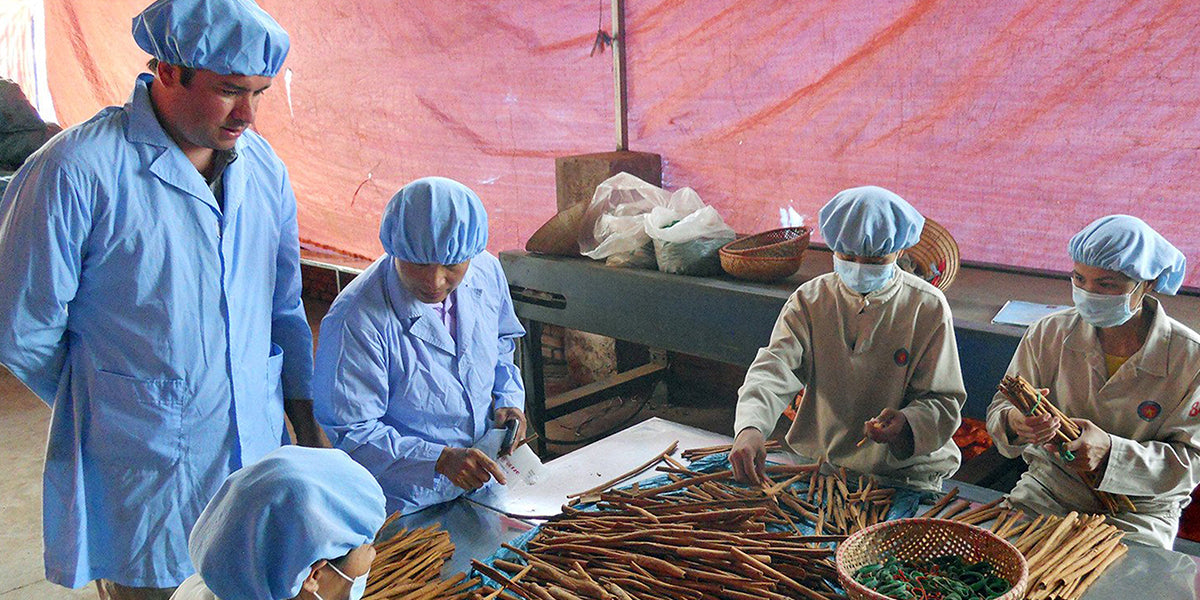Origins of Saigon Cinnamon, the Flavor Behind Our Chai Teas
Posted on November 15 2019

Join us on a Sourcing Stash journey to Southeast Asia, where we meet with the farmers who supply us with our amazing Saigon cinnamon. Vietnam is home to numerous important crops, including rice, coffee, cotton, and spices like pepper, ginger, and cinnamon.
Cinnamon, including its closely related cousin Cassia, is grown in several countries, each with its own unique flavor profile. Most of the cinnamon you’ll find in the United States is actually cassia, while “true” cinnamon (also known as Ceylon cinnamon or Cinnamomum verum) is more of a culinary spice. You would be more likely to find it in a specialty gourmet or spice store, as it is rarely found in tea blends.
Cinnamon trees outside of Hanoi, Vietnam.
We use Saigon cinnamon (Cinnamomum loureiroi) in our tea blends, which is related to Ceylon cinnamon and other cassia varieties. It has a sweeter flavor than Indonesian cinnamon, as well as 1-5% essential oil content and the highest content of cinnamaldehyde of all cinnamon species. The amount of cinnamaldehyde, found in the bark of cinnamon trees, is what conveys the distinct flavor and aroma of cinnamon. As such, we prefer to use Saigon for its bold, complex aroma.
We’ve blended Saigon cinnamon into our teas to produce flavorful, aromatic blends like our Orange Spice, Christmas Eve, and all our chai teas, including Chai Spice and Spice Dragon Red Chai!
Transforming the cinnamon tree to an ingredient used in tea
Despite its name, our Saigon cinnamon actually hails from forests outside Hanoi, Vietnam. Here, the tall cinnamon trees grow on steep mountains, where the warm and humid climate provides the perfect growing environment.
It takes many steps to transform the cinnamon tree to an ingredient we can use in our tea blends. From bringing the tree down the mountains, to removing and cleaning the bark, to air drying the cinnamon until it curls into its familiar stick appearance, each step is labor intensive.
Up amongst the cinnamon trees live the families who grow and harvest the crop. Cinnamon trees are cut and sent down the mountain to be utilized.


The branches of the tree are used as firewood or repurposed for building. The bark is removed to become cinnamon sticks and spice. The leaves are sent to oil distillers, for cinnamon oil production.
"It is important to note that every part of the tree is used, from branches to bark."
This crop would not be sustainable without an amazing replanting program. Seedlings are continually grown to replace the cinnamon trees, which are not typically grown in an orchard or in a field harvest manner (as timber is). These are quick-growing, smaller trees for the most part, taking about 5-7 years to reach full maturity. Vietnamese cinnamon trees are grown in thick forests and cut spatially; we do not work with suppliers who practice "clear cutting" or the like.
 Cinnamon tree seedlings.
Cinnamon tree seedlings.
On the way from the mountain forests back down to Hanoi, the cinnamon tree bark is removed, cleaned, and dried.
 Raw cinnamon tree bark arrives for cleaning.
Raw cinnamon tree bark arrives for cleaning.
Many of the people who work here are part-time employees. They drop their children off at school and work for 3-4 hours scraping and cleaning bark, before picking up their children and returning home.
The tough surface of the bark is scraped off. The bark is then sent through a planer to remove another layer from the topside and underside. Afterwards, the bark is set out in the sun to dry, curling into its distinctive shape.
 Laid out to dry.
Laid out to dry.
The cinnamon sticks are brought to Hanoi to be finished, where they are hand sorted and graded by size.
"Although this is a more expensive ingredient, we think it makes all the difference in providing a bold, warm, and spicy flavor to our teas."
 Cinnamon sticks are sorted and graded by hand.
Cinnamon sticks are sorted and graded by hand.
Saigon cinnamon is available in several grades, using a system based on the amount of labor involved in finishing the product, as well as the oil content percentage. As most of the flavor of cinnamon comes from its oil, we choose to use Saigon cinnamon with the highest oil content available—5%.
Sourcing Stash
We travel around the world to visit the places where our tea ingredients are grown. Whether it's walking along tea bushes in India or peppermint fields in the Pacific Northwest, it is part of our sustainable sourcing program to feel confident in how our ingredients are produced.
We want to confirm with our own eyes that suppliers are following our Code of Conduct and that their practices match our values as a global citizen. This frequently means checking in on living conditions for workers, the cleanliness of processing facilities, making sure safety programs are in place for employees, and more.
It is also about relationship development. We want to know our suppliers personally, meet with farmers, and build close bonds. In working together, we are able to work more closely and better align our common interests.




